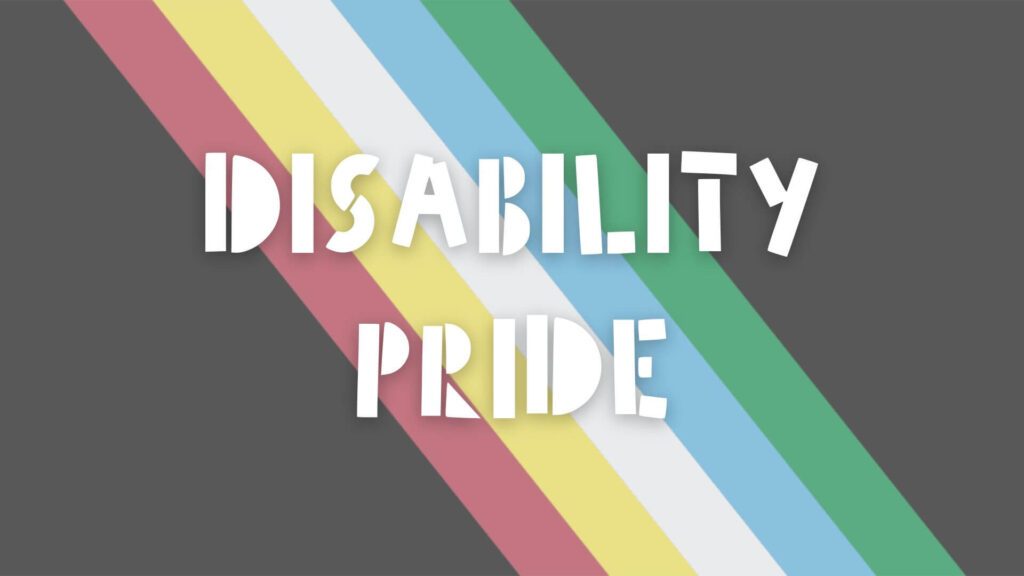Disability Pride Month
Disability Pride Month is celebrated globally each July, evolving from a single day to a month-long event. It aims to raise awareness about disabilities, foster positive conversations, and celebrate the diversity within the disabled community. Originating in the 1960s and 1970s disability rights movement, it fights discrimination, advocates for equal rights, and promotes inclusion.
Disability Pride raises awareness about experiences, challenges, and strengths within the community. This includes visible and invisible disabilities, fostering understanding, challenging stereotypes, and educating about disability rights, accessibility, and inclusion. Celebrating resilience, creativity, and achievements underscores valuable contributions to communities and society, challenging ableism, discrimination, and marginalization. It advocates for equality, inclusivity, and social justice, ensuring recognition and opportunities for all.
Since 2015, Disability Pride Month has gained momentum worldwide, providing a platform for individuals with disabilities to share their experiences.
The Disability Pride Flag
Created by Ann Magill in 2019, the Disability Pride Flag underwent a redesign in 2021 for inclusivity. It features a diagonal banner of five colors on a dark background, symbolizing solidarity among different disabled sub-communities.
Green: Sensory Disabilities
The green stripe symbolizes sensory disabilities affecting vision, hearing, touch, taste, and smell. Globally, 2.2 billion people have vision impairments, and hearing loss affects 466 million, including 34 million children. Sensory processing disorders can cause hypersensitivity or hyposensitivity to stimuli, impacting daily activities like anosmia (loss of smell) and ageusia (loss of taste), significantly affecting quality of life and safety.
Blue: Emotional and Psychiatric Disabilities
The vibrant blue stripe represents emotional and psychiatric disabilities, including depression, anxiety disorders, bipolar disorder, schizophrenia, and PTSD. These conditions affect mood, thought patterns, behavior, and overall quality of life. Including blue in the flag’s design aims to destigmatize mental health conditions, encourage open conversations about mental well-being, and emphasize their validity and the need for recognition and support.
White: Non-visible and Undiagnosed Disabilities
The white stripe symbolizes non-visible and undiagnosed disabilities, which are often overlooked, including chronic illnesses, cognitive impairments, mental health conditions, and neurological disorders. These disabilities significantly impact daily life yet may not be immediately apparent, thereby challenging individuals to seek answers and support while facing skepticism and difficulty accessing accommodations.
Gold: Neurodiversity
The vibrant gold stripe symbolizes neurodiversity, embracing autism, ADHD, dyslexia, and other neurological differences affecting thinking, learning, and information processing. Acknowledging neurodiversity challenges the idea of one “normal” way of thinking, celebrating unique perspectives and contributions to society. It shifts from viewing neurological differences as disorders to accepting natural variations, promoting understanding, and accommodations enabling individuals to thrive.
Red: Physical Disabilities
The vibrant red stripe represents physical disabilities affecting mobility, physical function, or bodily structure, including mobility limitations, chronic pain, disfigurement, or limb loss. Conditions arise from congenital disorders, accidents, illnesses, or aging. Individuals face challenges navigating inaccessible environments and societal barriers. Red symbolizes the importance of accessibility, inclusion, and equality, advocating for inclusive spaces, removing barriers, and providing accommodations for full participation in life.
Black Background: Mourning and Protest
The black background symbolizes mourning and protest, honoring disabled individuals who lost lives due to ableism, violence, negligence, and mistreatment. It commemorates victims of prejudice, discrimination, and misunderstanding, symbolizing a defiant stance against systemic oppression. Similar to the Jolly Roger flag, it signals rebellion and resistance, demanding recognition, respect, and equal opportunities for all disabled individuals.
Conclusion
Disability Pride Month highlights strength, resilience, and diversity within the disabled community, celebrating unique experiences, raising awareness, and addressing challenges fostering inclusive societies. The Disability Pride Flag symbolizes this movement, honoring disabilities and lives lost to ableism, violence, and negligence. Its stripes symbolize breaking barriers, yet challenges persist. Disability Pride Month’s ongoing advocacy demands respect, dignity, and equal opportunities, while also celebrating human diversity, which ultimately empowers individuals to thrive regardless of their abilities. It’s a catalyst for change, advancing equality and acceptance, creating a world where disabilities enrich human tapestry, fostering full potential and inclusion for all.
